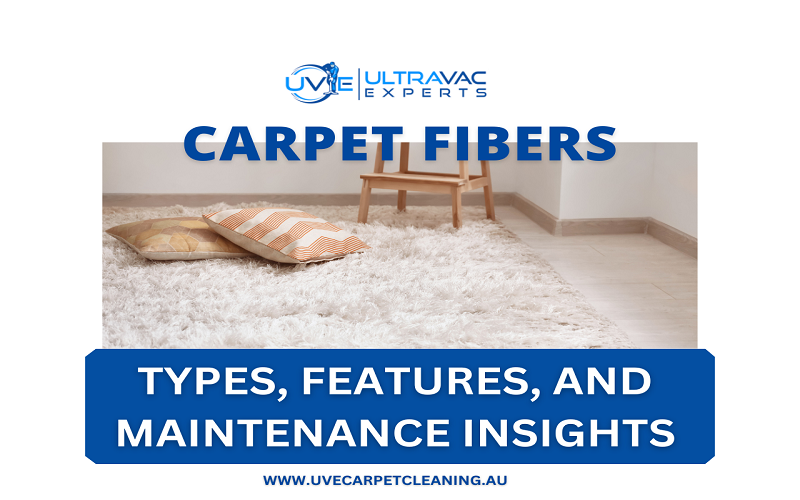Carpet fibers play a crucial role in determining the overall look, feel, and performance of your flooring. From durability to softness, the type of fiber used in a carpet influences everything from comfort underfoot to how easily it can be cleaned and maintained. Whether you are furnishing a home or outfitting a commercial space, understanding the characteristics of different carpet fibers is essential for making an informed choice.
Each fiber type—whether natural or synthetic—comes with its own set of advantages and care requirements. Knowing how to properly maintain each one not only enhances the longevity of your carpets but also preserves their appearance and function. By being aware of these differences, you can prevent common issues like premature wear, fading, and staining.
This blog aims to provide valuable insights into the various types of carpet fibers, their unique features, and how to maintain them effectively. Whether it’s regular cleaning routines or knowing when to call in professional carpet cleaning services, this guide will help you keep your carpets looking their best for years to come.
Types of Carpet Fibers
Carpet fibers are broadly categorized into natural and synthetic types, each offering distinct characteristics that impact their performance, appearance, and maintenance needs. Choosing the right fiber can significantly affect the longevity and functionality of your carpets.
A. Natural Fibers
Natural fibers are known for their luxurious feel and eco-friendliness, making them a popular choice for those seeking organic materials.
- Wool: Soft, durable, and resistant to stains. Wool carpets excel in high-end settings and offer natural insulation.
- Cotton: Lightweight and breathable but less stain-resistant, best for low-traffic areas.
- Silk: Luxurious and soft, often blended with wool for a high-end appearance but requires delicate care.
- Ideal Settings: Natural fiber carpets are perfect for homes, boutique spaces, or any environment where comfort and luxury are prioritized.
B. Synthetic Fibers
Synthetic fibers are engineered for durability and easy maintenance, making them practical for busy environments.
- Nylon: Highly durable, stain-resistant, and easy to clean, ideal for high-traffic areas.
- Polyester: Soft, fade-resistant, and affordable, but less durable than nylon.
- Olefin (Polypropylene): Moisture-resistant and suitable for both indoor and outdoor use, but more prone to wear.
- Best Environments: Synthetic carpets are great for commercial spaces, offices, and homes with children or pets due to their durability and low maintenance requirements.
Both fiber types have unique strengths, and knowing the differences can help you choose the right carpet for your space.
Key Features of Carpet Fibers
When selecting carpet fibers, it’s essential to consider various features that impact performance and suitability for your space. Here’s a breakdown of the key characteristics:
| Feature | Natural Fibers | Synthetic Fibers |
| Durability | Wool is durable; cotton and silk are less so. | Nylon is highly durable; polyester and olefin are also strong. |
| Stain Resistance | Wool has natural stain resistance, but cotton and silk stain easily. | Nylon, polyester, and olefin are highly stain-resistant. |
| Comfort | Soft and plush (especially wool, cotton, and silk). | Polyester offers softness; nylon and olefin are less so, but can be cushioned. |
| Environmental Impact | Biodegradable and renewable (wool is eco-friendly). | Petroleum-based, is less sustainable, though some like recycled polyester are greener. |
Understanding these key features helps you make an informed decision based on your needs for durability, stain resistance, comfort, and environmental impact.
Maintenance Insights
Understanding the specific care requirements for different carpet fibers is crucial for preserving their appearance, durability, and overall performance. Here’s a guide to help you maintain your carpet fibers, whether they are natural or synthetic.
A. Regular Cleaning Tips
Regular maintenance is essential for all types of carpet fibers. However, different fibers require specific care to ensure they stay clean and in good condition:
| Fiber Type | Vacuuming Frequency | Cleaning Method |
| Natural Fibers | Weekly, more often in high-traffic areas | Use a vacuum with a brushless suction setting to avoid damaging delicate fibers like wool. |
| Synthetic Fibers | Weekly or bi-weekly, depending on use | Use a vacuum with a rotating brush to lift dirt effectively from synthetic fibers. |
- Importance of Vacuuming: Regular vacuuming prevents dirt and debris from embedding into carpet fibers, prolonging the life and appearance of the carpet.
- Cleaning Methods: Wool should be treated with care to avoid shrinking or matting. Nylon, polyester, and olefin can tolerate more aggressive cleaning methods, such as steam cleaning.
B. Stain Removal Strategies
Accidents happen, and quick response is key to preventing permanent stains. Different carpet fibers react differently to stains, so using the right technique is important:
| Fiber Type | Quick Response Technique | Recommended Products |
| Natural Fibers | Blot the stain gently with a clean cloth; avoid rubbing | Use mild solutions like wool-safe detergent or white vinegar for gentle stains. |
| Synthetic Fibers | Blot the stain and use water-based cleaners | Commercial stain removers are effective for tougher synthetic fibers. |
- Quick Response Techniques: Always blot, never rub, to avoid spreading the stain further into the fibers.
- Recommended Products: Wool requires gentler, natural products, while synthetic fibers can withstand more potent, commercial-grade cleaners.
C. Professional Cleaning Recommendations
Professional carpet cleaning is important to extend the life of your carpets, especially for deep cleaning that household vacuums can’t achieve. The frequency of professional cleaning varies based on the type of fiber:
| Fiber Type | Recommended Frequency | Benefits of Professional Cleaning |
| Natural Fibers | Every 12-18 months | Removes deep-seated dirt while preserving delicate fibers. |
| Synthetic Fibers | Every 6-12 months, depending on use | Effective for heavy traffic areas and removing embedded allergens. |
- Benefits: Professional cleaning services use advanced equipment to extract deep dirt, bacteria, and allergens that regular cleaning may miss. It also revitalizes the carpet’s appearance and can help prevent fiber degradation over time.
- Frequency: Wool and other natural fibers require less frequent professional cleaning, whereas synthetic fibers may need it more often, especially in high-traffic environments.
Maintaining your carpets based on the type of fiber not only ensures a longer life for your flooring but also keeps your home or business looking pristine. By combining regular cleaning routines with professional services, you can maintain the beauty and functionality of your carpets for years to come.
Choosing the right carpet fiber is crucial for ensuring the longevity, comfort, and aesthetics of your flooring. Each type of fiber offers unique characteristics that can impact maintenance and overall satisfaction. Whether you prefer the natural beauty of wool or the durability of synthetic options, understanding these fibers will help you make informed decisions when purchasing carpets.
For effective maintenance and care of your carpets, consider the importance of regular cleaning and professional services. If you’re looking for professionals who can provide expert carpet cleaning services tailored to your carpet’s specific needs, consider reaching out to Ultravac Experts.
For those interested in enhancing the life of their carpets through professional cleaning, contact Ultravac Experts at +61 403 670 035 or email admin@ultravacexperts.com.au.
selecting the right carpet fiber is essential for optimal performance and durability, impacting both maintenance and comfort. To ensure your carpets remain in pristine condition and to protect your investment, professional carpet cleaning services can make all the difference—trust Ultravac Experts for expert care.



